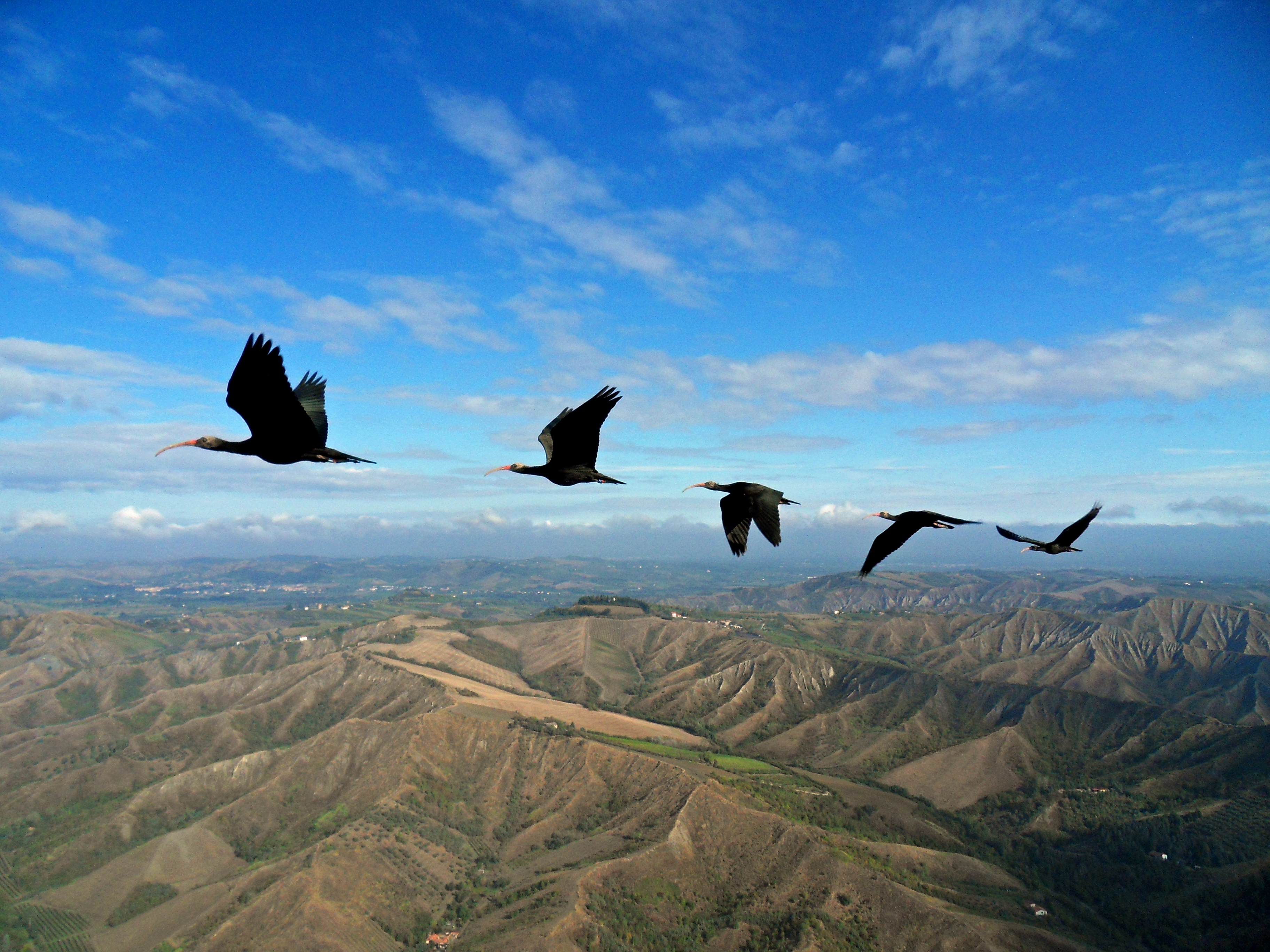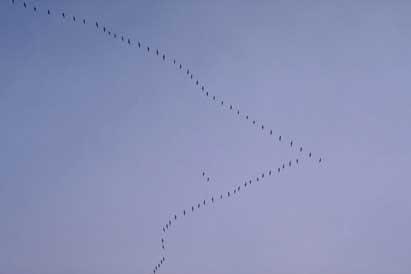The study of the Ibis hermit reveals the biomechanics of flight in V
2014/01/16 Kortabarria Olabarria, Beñardo - Elhuyar Zientzia Iturria: Elhuyar aldizkaria

For the first time a group of international researchers has discovered and monitored a group formed by the base of hermits Fourteen Ibis (Geronticus eremita). They have researched in Austria and Italy. As usual, the group of migratory birds carried a V-shaped formation when flying. According to the article published in the journal Nature, researchers have analyzed for 43 minutes the position, speed, direction and flights of all birds.
What could be expected, suspect: This V-shaped formation allows birds to save energy. In the observation work carried out, the researchers have been able to verify that, when flying, the birds not only place the body in a certain position, but synchronize the movement of the wings. Birds fly in groups, but often perform individual movements to move and adjust the flight to get the best aerodynamic advantage possible.
According to the article, when flying in a V-shaped formation, the wild hermits behind them move their wings synchronously, taking advantage of the impulse of the bird that goes before. When a bird flies leaves a trail. When placed a little further back, but in a certain pair, the bird that goes behind receives a boost in the previous one. On the contrary, the flight of the people who travel behind the bird heading in front of the group is not usually synchronized, which allows to avoid the descending air current that is formed as a result of the flight of the previous one.
According to the authors of the study, wild hermits have a great capacity to predict the aerial turbulences generated by the hillsides of the neighbors.
So far, theoretical models of V-shaped flights have been made on several occasions, but it was not shown with wild birds. The study involved the Royal Veterinary College of the United Kingdom, the American University of Washington, the Austrian organization Waldrapp, the German University of Humboldt, the University of London and the University of Oxford.

Gai honi buruzko eduki gehiago
Elhuyarrek garatutako teknologia





